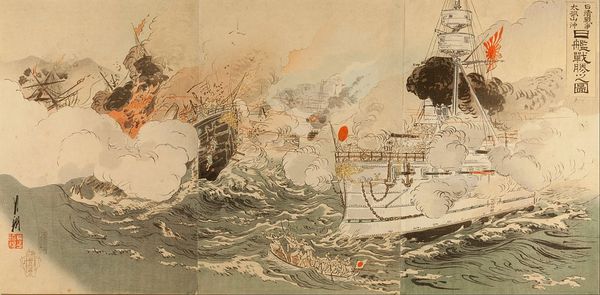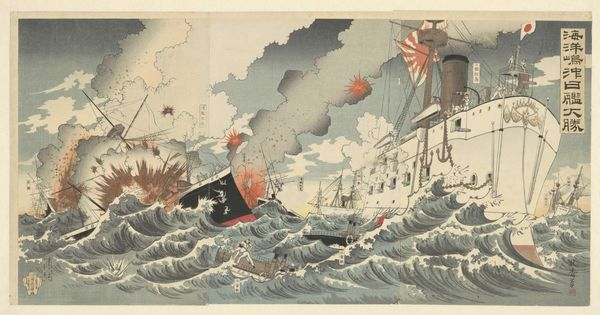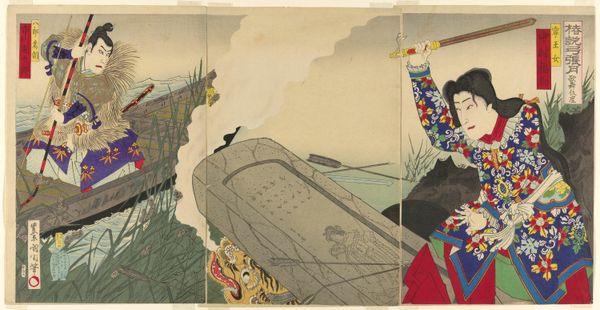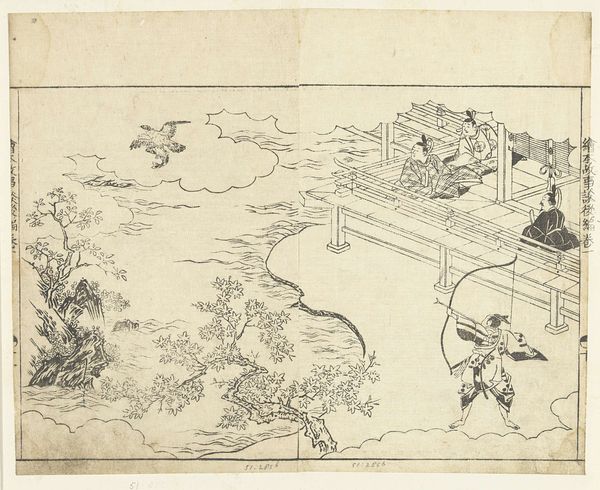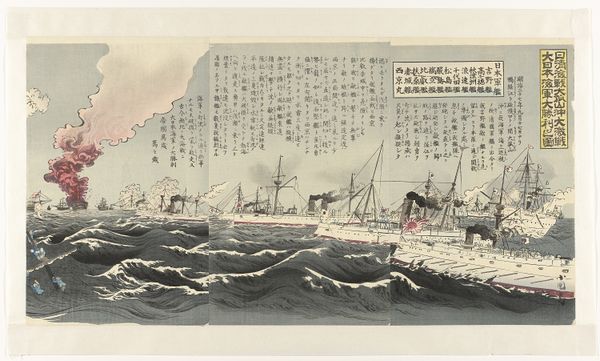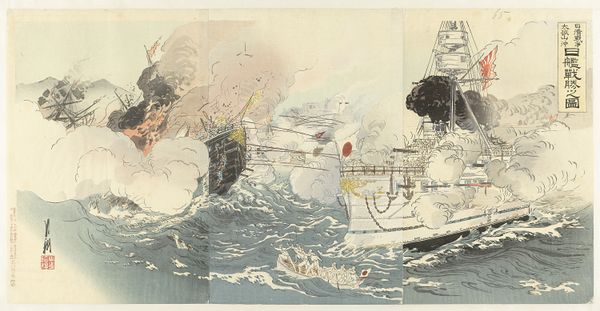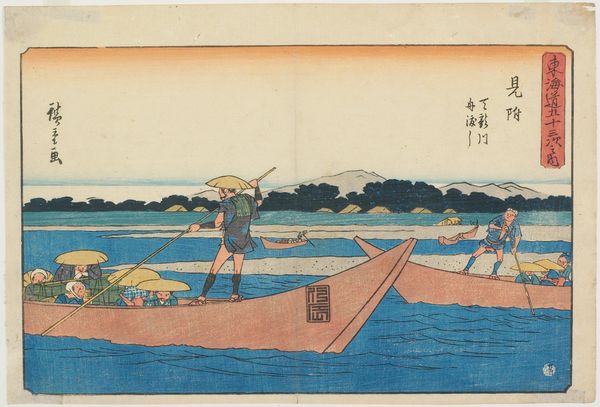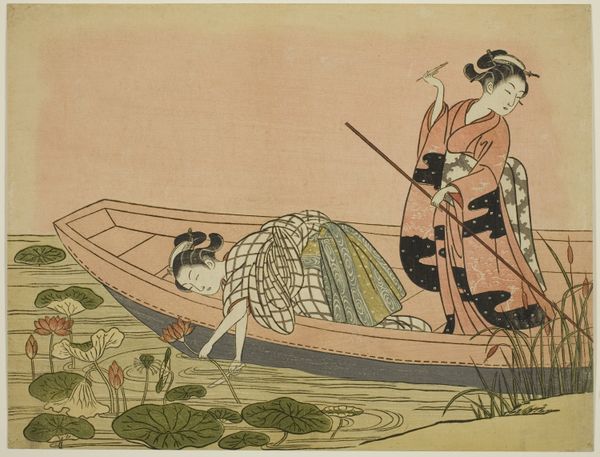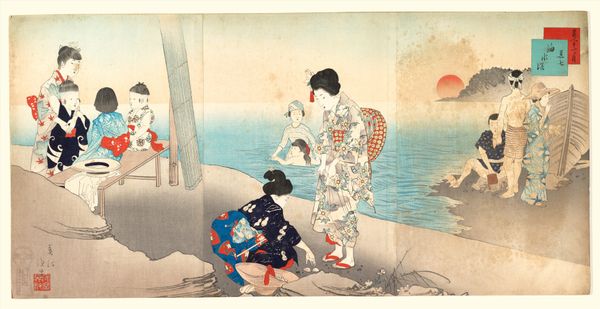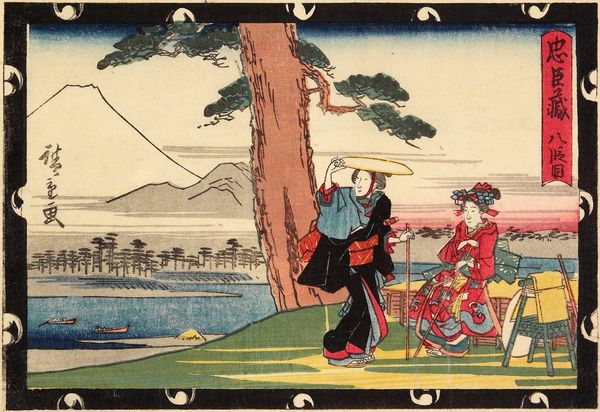
Dimensions: 7 x 9 1/4 in. (17.8 x 23.5 cm)
Copyright: Public Domain
Curator: This striking print is titled "Sakamoto Otasuku", attributed to Mizuno Toshikata, dating approximately from 1884 to 1904. The Metropolitan Museum of Art holds this example of Japanese Ukiyo-e. Editor: What hits me first is the churning water—so turbulent! And yet there's this figure, so composed, almost strolling along with a map in hand like he’s planning a Sunday picnic. The sea and ship ropes give this landscape a unique aesthetic! Curator: Indeed. The figure is Sakamoto Otasuku, an officer seemingly unfazed amidst naval conflict. Note his gaze—directed towards a distant, embattled ship, indicated by smoke and fiery bursts. Holding a map suggests strategic planning and knowledge is a type of power. The style is indicative of Ukiyo-e prints, translating to "pictures of the floating world". It highlights a specific moment or event as it conveys deeper cultural and narrative meaning. Editor: Floating world… It feels apt! Like everything, even war and strategy, is just part of the current. The woodblock printing is so distinctive. It looks as though it was so hard to create because of the precision of each stroke of line, however the picture provides freedom! Is there any more nuance there beyond the landscape theme and figurations? Curator: Ukiyo-e prints weren't solely for aesthetics; they played crucial roles in disseminating news and cultural trends, which is key. This print could be viewed through multiple lenses of national identity, power projection, and representations of individuals within conflicts. Each element – the churning water, the distant combat, the figure’s posture, and the map – all reinforce interconnected concepts of action, order and change. Editor: Absolutely! Thinking about its initial audience contextualized how a society makes sense of larger struggles. It is almost a way to show control among the vast space that’s unexplainable in war. Curator: Precisely. The print acts as a visual record—encoding ideologies that would otherwise remain implicit, shaping collective perception of naval and political circumstances. Editor: This piece truly embodies seeing history through symbolism. Curator: Yes, indeed—images allow memories and meaning to echo, allowing history to live.
Comments
No comments
Be the first to comment and join the conversation on the ultimate creative platform.
